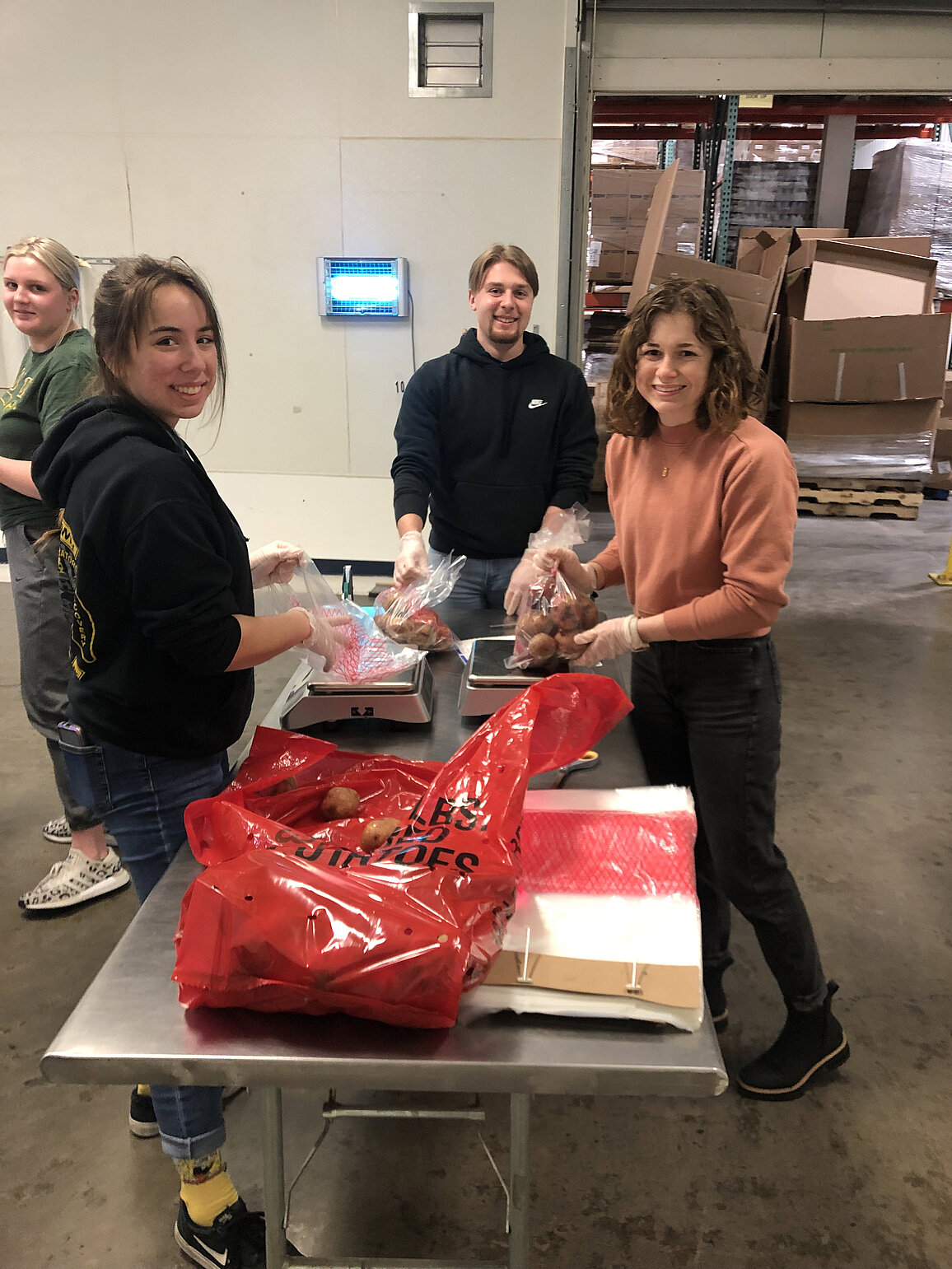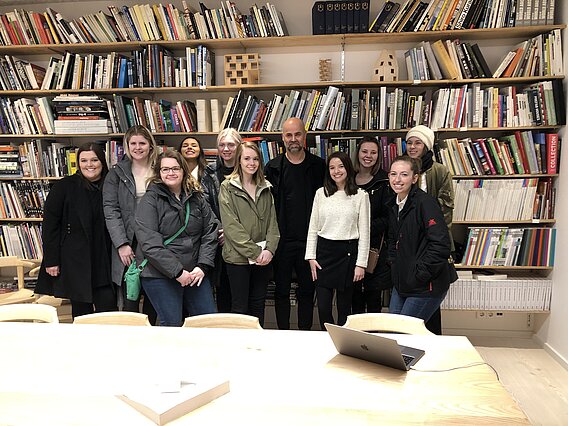
From HDE to HSE
North Dakota State University’s College of Human Development and Education is adopting a name change to the College of Human Sciences and Education to better describe the college. The new name went into effect July 1, 2019. The purpose of the change is twofold. First, Human Sciences is more inclusive of the programs offered within the College. Second, the change follows national trends.
One of the college’s departments will also be renamed. Apparel, Design and Hospitality Management will now be known as the Department of Apparel, Merchandising, Interior Design, and Hospitality Management. This again is an effort to be more inclusive of the curriculum being taught within that department.
Travel experience inspires interior design students

To cultivate creativity, it helps to step away from the familiar.
Junior Madalyn Casper found that to be true when she traveled to Sweden and Finland as part of her interior design coursework at NDSU. The experience introduced her and her classmates to new cultures and cuisine, plus a new way of understanding their field.
“Being able to see different things related to design is important. It inspired me to bring some new ideas back home,” Casper says.
Ten students traveled to the northern European countries over spring break. Faculty in the Interior Design program plan an international study trip every three to four years. The opportunity isn’t required, but proves valuable for those who choose it.
“Students see that there’s no one way to understand design,” says Susan Ray-Degges, program coordinator. “They’re exposed to different materials and processes than we’re accustomed to in the United States.”
Led by local tour guides and NDSU faculty, the students explored art museums, architectural sites and design firms in Stockholm and Helsinki.
They toured the studio and house of Alvar Aalto, a founder of modern Finnish architecture and design, and Stockholm’s Rock Church, which is built into granite. They shared experiences and ideas with practicing designers at firms in both cities.
Casper’s favorite site was Helsinki’s Amos Rex museum, where she explored exhibits in its underground galleries. She marveled at a hovering concrete slab and a light fixture created from deconstructed dandelions.
The traveling scholars also discovered sites that weren’t on the original itinerary – an art installation in a subway station and a 1920s library with original inlay work and a stunning rotunda.
“We wanted our students exposed to high-quality design without experiencing it as only tourists,” says Eunice Kapplinger, associate professor. “Our (local) guides went above and beyond in their recommendations.”
Some of the best experiences weren’t scripted, Casper says. Students were encouraged to talk to locals and explore the culture in both cities. Students learned about the countries’ generous maternity leave policies and were inspired by how designers used natural light to nurture warmth in a northern climate.
By traveling, students see the practical application of theories that they study in class but don’t necessarily see in the design and architecture that surrounds them every day, Kapplinger says. Travel also exposes them to different design priorities. For example, designers in northern Europe are leaders in universal and green or sustainable design – areas of emphasis that are growing in the U.S.
Students also saw demonstration models and iconic Nordic furniture that brought their studies to life. They had a chance to see and touch pieces they had reviewed in the classroom.
“It helped them make a connection to their classes,” Ray-Degges says.
For Casper, traveling to Sweden and Finland had immediate payback. She and a partner were assigned to design an oncology center as one of their final design studio projects for the semester. Both students had been on the study abroad trip. As a result, they were inspired to include some Nordic design touches like light-colored wood in the final project.
“We were more bold because of the experience,” she says.
Casper heads to California for an internship this summer. Her travel experiences will continue to inspire.
“I’m already thinking differently, more broadly,” she says. “I’m so glad I took the opportunity.”
Susan Ray-Degges named fellow of interior design organization

Susan Ray- Degges, professor and interior design program coordinator, has been named a fellow of the American Society of Interior Designers. It is the society’s highest honor, with less than1 percent of its members attaining the level.
“I am truly honored and humbled by this recognition – it represents the ultimate acknowledgement from my peers of outstanding achievement. This award is a result of the encouragement and support of my colleagues, peers, mentors, alumni, current students and family that have helped shape me into the design professional I have become,” said Ray-Degges.




